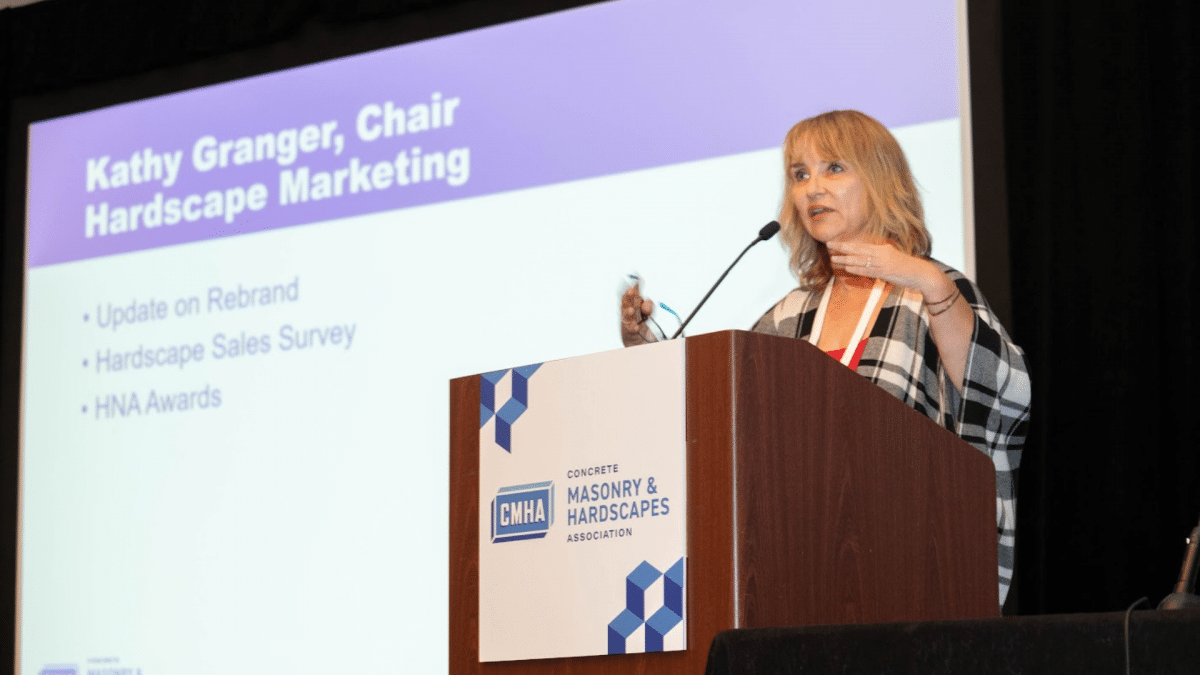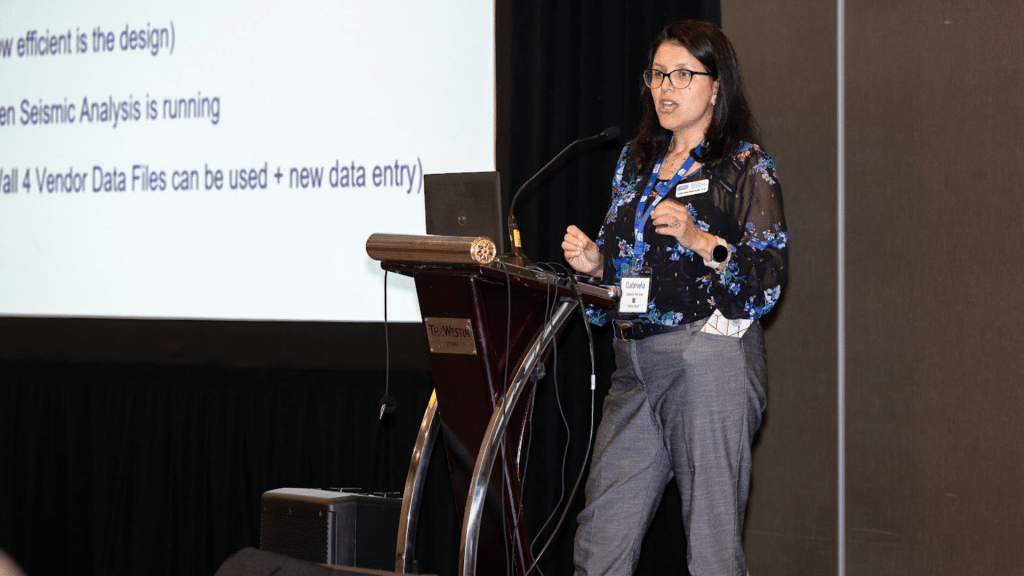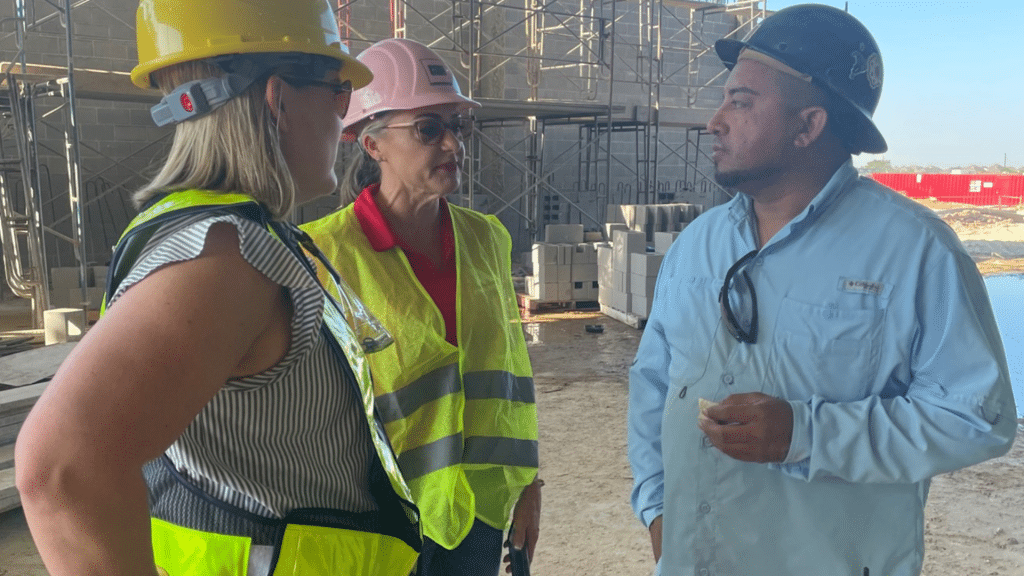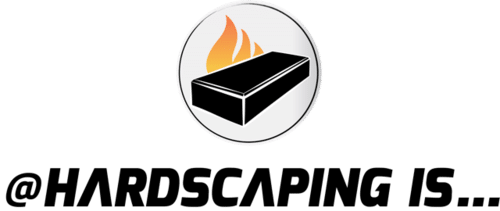Women in hardscaping are breaking barriers, finding their place, and building lasting legacies in a supportive and ever-evolving industry.

Though the hardscaping industry has long been male-dominated, the women within it are determined to pave the way to see their numbers grow and inspire lasting change.
Jamie Rodriguez, a Commercial Masonry Account Executive at Oldcastle in Houston, Texas, started her career at a bank.
“I’m in this 5×5 cubicle every day. My hair has to be in a bun. They’re telling me I have to wear pantyhose and I’m like, ‘This is crazy. Who could spend their whole life in a 5×5 cubicle?’ I wanted to be outside. I have this creative brain. I just didn’t feel like my life was being fulfilled,” Rodriguez said.
A client at the bank connected her with a stone yard and she went into sales, learning everything from the ground up – literally! From there she eventually was poached by a “secret shopper” at the stone yard and made her way into the hardscaping industry where she collaborated with local civil engineers and the Greater Houston Builders Association in helping provide input for the revisions to the City of Houston Infrastructure Design Manual as it related to permeable pavers and stormwater management.
“If you look at that cycle from being a pantyhose, bun-wearing bank lady to advocating for code revisions in the City of Houston, that’s a big change, right?” Rodriguez said. “So, I think there’s a place for women in this industry. You don’t have to be an architect or a landscape architect. You just have to be helpful. You just have to be honest and not be afraid to present alternative solutions.”
There is a Place for YOU
Gabriela Mariscal, P.E., an SRW Division Engineer at CMHA, originally thought her career in civil engineering only had one real path. She thought she would follow in her father’s footsteps and work on bridges throughout her career. But she discovered there are so many options, especially options that support a healthy work-life balance.

“Of course there were a lot of, you know, raised eyebrows because it’s not necessarily feminine. But it’s a very interesting career. You can design. You can build. You can work in inspection. The work I do for the association is basically halfway in between what a government or building official does and what a consultant in the private sector does,” Mariscal said. “…It is very creative. It is not repetitive. You can do more geotechnical jobs, slope stabilities, redesign of all types of retaining walls, foundation improvement, etc. It is a big umbrella.”
Rodriguez noted that sometimes you have to try out multiple options under that umbrella to find the right place for you.
“Let’s get you in the industry, and let’s figure out where your place is. Maybe it’s accounting. Maybe it’s construction management, and maybe it’s customer service. Maybe it’s color mixing. I don’t know! Maybe, you’re mechanically inclined, and you want to work at the plant. Be an operator. Maybe you want to drive an 18-wheeler,” Rodriguez said. “But we have a place for you.”
Kathy Granger, Vice President of Marketing at Outdoor Living Supply in Franklin, TN, tells women interested in pursuing a career in hardscaping – “Go for it!”
“I don’t think this industry is on a lot of women’s radar. They don’t know what opportunities exist or the amazing things this industry is doing. If there was more awareness of the opportunities – I think women would be jumping on board,” Granger said.
A Solutions-Focused Career
Avery Terry, a Commercial Design Consultant for Belgard Commercial in the Jewell Region, originally started her career in masonry before moving into hardscapes. She said she was drawn to the way the hardscaping industry offered more opportunities to create sustainable solutions and to educate others on the options.
“With hardscaping, we can change the way our world is built,” Terry said.
She gave the example of a recent project where she was able to save the client from needing to purchase another property and from having to hire more staff. Her solution was not only more pleasing to the eye, but the functionality made their lives easier.
“You get to save the day. I think that’s kind of fun!” Terry said.
Terry said that she thinks one of the keys to success in the hardscaping industry is being able to think outside of the box.
“You can’t be stuck in tradition. You have to be willing to be creative, to explore new possibilities,” Terry said. “The technical knowledge can be taught, but you have to come with that ‘what if’ approach.”
On-the-Job Learning
Mariscal stressed the opportunities for on-the-job learning, recommending that women never underestimate the types of experiences they have.
“When I was doing consulting, we were doing geotechnical work for big subdivisions. And when you do a subdivision, it is, you know, hundreds of homes with a lot of retaining walls…So when you design, it’s 40 walls there, 30 walls here,” Mariscal explained.
After that job she took some time off to be at home with her children, but when she started searching for jobs again, she found that the skills she developed in that consulting job put her well ahead of other job candidates.
“This is not something you are taught in school. It’s very specialized,” she said. “The concepts, you know, we’ve learned at school. This is how it works. These are the basics of the system. But, actually designing with that is what made me different when I was applying to work for the association.”
Granger said that it is important to be confident and to ask for those opportunities for on-the-job learning.
“You cannot be in this industry and be intimidated by being far outnumbered by men,” Granger said. “I grew up with all brothers so that might have made this easier for me. In the beginning, I had to speak up, make sure I had a place at that table, and asked to be included. It gave me a great opportunity to contribute and demonstrate my value. I also never shied away from additional responsibilities or the ability to take more ownership.”
“You’ve got to have thick skin because it does take a little while to earn the respect, particularly of some men in this industry,” Rodriguez echoed.

A Supportive Community
Women in the hardscaping industry describe it as a supportive community where they continuously learn from and empower one another.
CMHA offers the Concrete Women Connect group, which meets in-person twice a year at the large CMHA meetings and stays connected online the rest of the year. Mariscal shared that it has been really powerful to see the group of women grow each year.
“We’re doing more and more. And I think that is fantastic!” she said.
Terry and Rodriguez said they have been seeing more women join their companies and they think it has a lot to do with how rewarding the jobs can be, especially for the future.
“We get to change people’s lives with our hardscaping solutions,” Terry said. “It’s not just a paver. It’s not just a retaining wall. We’re not just selling a product. We are helping create a solution that is better for our world.”
“I think to be a part of an industry that has such a long history and to be able to say that after you are gone, the projects you worked on would still be here, it’s kind of like leaving a little legacy,” Rodriguez said. “I can’t give billions of dollars to a children’s charity, but my daughter will be able to tell her children, ‘Your grandma worked on that project.’ I’m leaving something behind that is going to impact people. It’s cool to feel like I did something to make the world a better place.”
